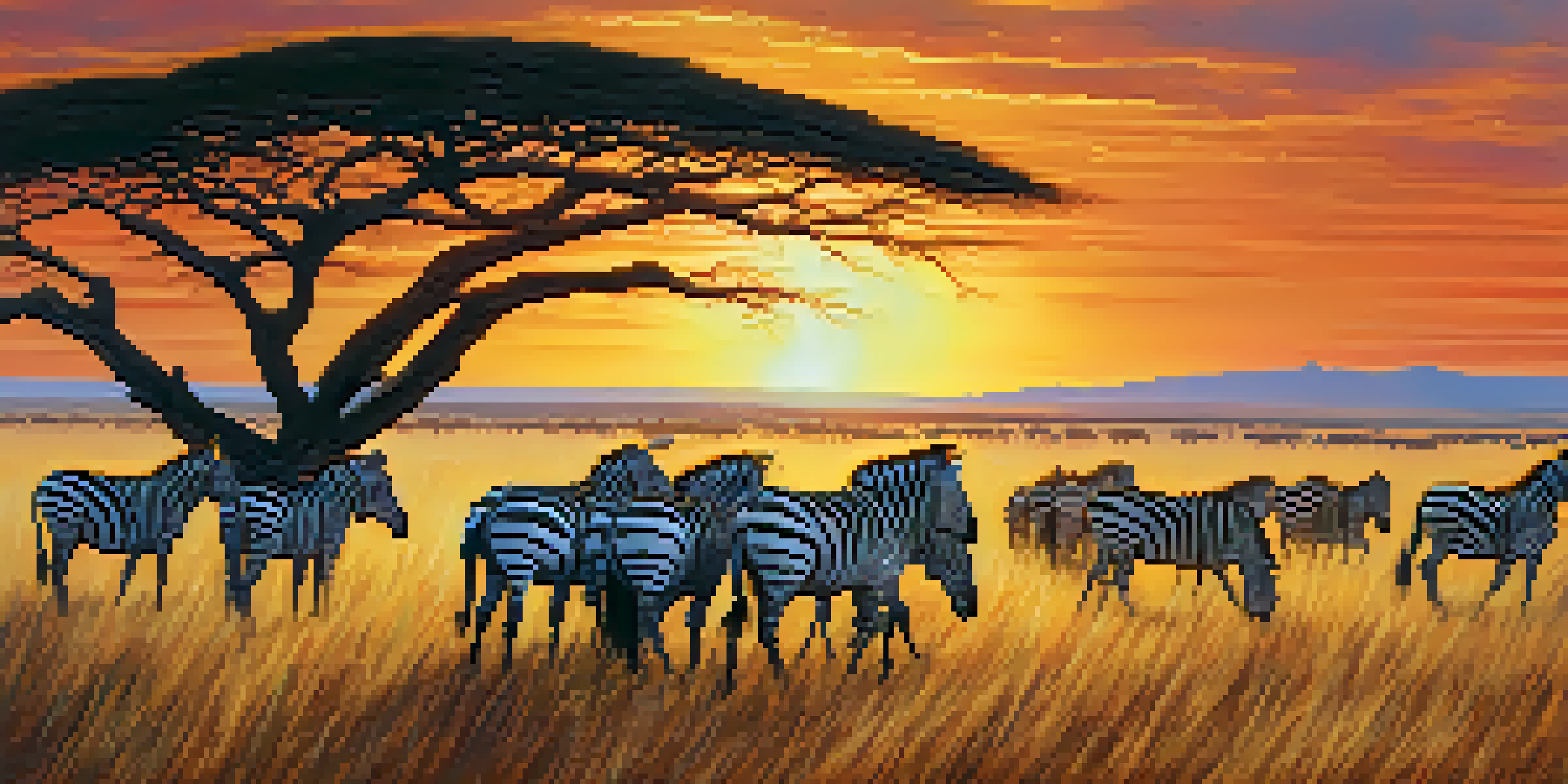Wildlife Photography: Best National Parks in Africa

The Thrill of Wildlife Photography in Africa
Wildlife photography is an exhilarating pursuit, especially in Africa, where diverse ecosystems teem with life. From the sweeping savannas to dense jungles, the continent offers a unique backdrop for capturing breathtaking images. Photographers often seek out the thrill of spotting the 'Big Five'—lion, leopard, elephant, rhino, and buffalo—that roam freely in their natural habitats.
Kruger National Park: A Photographer’s Paradise
Kruger National Park in South Africa is one of the most renowned wildlife photography destinations. With over 7,500 square miles of varied landscapes, it’s home to an impressive array of wildlife and plant species. Photographers flock here for the chance to capture stunning images of animals like the majestic lion, often seen lounging in the sun or stalking prey.
Diverse Locations for Wildlife Photos
Africa boasts stunning destinations like Kruger, Serengeti, and Masai Mara, each offering unique wildlife photography opportunities.
Serengeti National Park: Capturing the Great Migration
The Serengeti in Tanzania is famous for its annual Great Migration, where millions of wildebeest and zebras traverse the land. This natural spectacle offers photographers unique opportunities to capture dynamic shots of animals in motion. The vast plains and dramatic skies create a perfect canvas for stunning wildlife photography, especially during the golden hours of sunrise and sunset.
Masai Mara: The Jewel of Kenya’s Wildlife
Masai Mara National Reserve in Kenya is celebrated for its rich wildlife and picturesque landscapes. Here, photographers can witness predators like cheetahs and lions in action against the backdrop of acacia trees and rolling hills. The reserve also hosts the Great Migration, making it an essential spot for capturing dramatic scenes of nature’s fierce competition for survival.
The Importance of Preparation
Successful wildlife photography in Africa requires careful planning, including knowledge of optimal visiting times and ethical practices.
Etosha National Park: A Unique Salt Pan Landscape
Located in Namibia, Etosha National Park is distinguished by its vast salt pan that attracts a variety of wildlife. This unique terrain offers photographers the chance to capture stark contrasts between the white salt pan and the colorful wildlife that visits. The park is particularly known for its abundant waterholes, where animals come to drink, providing perfect opportunities for stunning close-ups.
Chobe National Park: A Haven for Elephant Lovers
Chobe National Park in Botswana is one of the best places in Africa to photograph elephants. The park is home to one of the largest elephant populations on the continent, offering countless opportunities for capturing these majestic creatures in their natural habitat. Besides elephants, Chobe's diverse ecosystems support a rich variety of wildlife, making it a versatile location for photographers.
Capturing Iconic Animal Moments
Photographers can capture breathtaking images of iconic animals, from elephants in Chobe to gorillas in Bwindi, emphasizing nature's beauty.
Bwindi Impenetrable Forest: A Gorilla Photographer's Dream
For those interested in capturing images of gorillas in their natural habitat, Bwindi Impenetrable Forest in Uganda is a must-visit. The dense, lush forest provides a unique environment where photographers can observe and photograph these incredible creatures. Tracking gorillas through the forest requires patience and skill, but the reward of capturing their intimate moments makes it worthwhile.
Tips for Successful Wildlife Photography in Africa
To make the most of your wildlife photography adventure in Africa, preparation is key. Familiarize yourself with the best times to visit each park for optimal wildlife sightings. Additionally, investing in a good camera with a powerful zoom lens can help you capture stunning details from a safe distance, while being mindful of ethical photography practices ensures a respectful experience with wildlife.